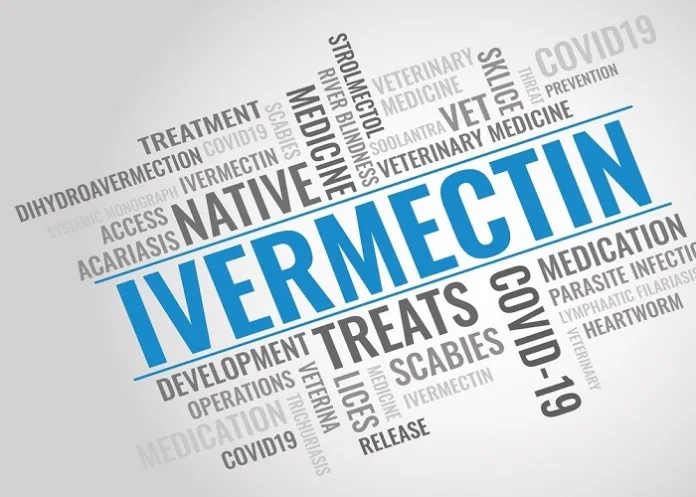During the early days of the Covid-19 pandemic, Ivermectin was widely touted as being both preventive and curative for infection, but the evidence to support these claims has never been forthcoming – and this South African case highlights and confirms the potential risks associated with the use of medicinal products for unproven indications.
Official public health policy at the time from the SA Health Products Regulatory Authority (Sahpra) – despite major legal challenges – had advised against the use of Ivermectin, but despite this, widespread use continued. Subsequently, Ivermectin toxicity, including seizures and gastrointestinal side‑effects, was reported.
Ivermectin drug‑induced liver injury (DILI) has been described only once, in 2006, in a patient using the medication for the treatment of Loa Loa infection.
However, in this local case, write Professor Mark Sonderup and colleagues from Groote Schuur Hospital, they diagnosed and treated a 70-year-old patient who used Ivermectin for Covid‑19 prophylaxis and developed a DILI.
They write in the South African Medical Journal that the woman presented with jaundice and cholestatic hepatitis, and a medical background that included hypertension, managed for almost 10 years with perindopril. She experienced occasional migraines, for which she used a combination of paracetamol and codeine, with infrequent use of sublingual rizatriptan.
She had not had a migraine for more than eight months before presentation. She was a non‑smoker and non-drinker.
She had not had any of the Covid vaccines and had never been diagnosed with confirmed SARS‑CoV‑2 infection.
During the third wave of Covid‑19 in SA, dominated by the Delta variant of SARS‑CoV‑2, she chose to use oral Ivermectin as prophylaxis against infection. Her primary care doctor had prescribed it, and she used a product obtained from a pharmacy dispensing Ivermectin for Covid-19 prophylaxis and treatment.
She administered it daily as a single 12mg oral dose. About three weeks after starting the Ivermectin, she noted darkening of her urine, followed by jaundice. When she went to her GP, her nasopharyngeal Covid‑19 polymerase chain reaction (PCR) swab was negative.
He initiated several investigations that revealed the following (normal range in brackets): total bilirubin 129 μmol/L; conjugated bilirubin 114 μmol/L; alkaline phosphatase 463 (normal range 40-160) U/L; gamma glutamyl transpeptidase 740 (<40) U/L; alanine transaminase 1 098 (<40) U/L; aspartate transaminase 811 (<40) U/L.
Her international normalised ratio was 1.3. Ultrasound of the liver was normal and all initial viral markers, including hepatitis A IgM, hepatitis B surface antigen and core IgM, and hepatitis C antibody, were negative.
She was referred to us for evaluation.
We performed additional investigations, including a negative hepatitis E PCR and normal immunoglobulin levels, and autoantibodies associated with autoimmune liver disease (anti‑nuclear factor, anti‑smooth muscle antibody, anti‑liver kidney microsome type 1 and antimitochondrial antibody) were all negative.
Given the absence of other causality, a preliminary diagnosis of Ivermectin DILI was considered. We advised that she stop Ivermectin, and a liver biopsy was performed. This showed portal inflammation and interface activity.
Portal triaditis with interface hepatitis comprising lymphocytes, plasma cells, histiocytes and eosinophils was evident. Mild ductular reaction with secondary ductulitis was also noted. Scattered lobular necroinflammatory foci were evident with prominent zone 3 cholestasis.
The liver biopsy injury pattern was compatible with a DILI. The R‑ratio value was calculated at 8.6, with >5 suggesting a more hepatocellular type of injury.
Her RUCAM score (Roussel Uclaf causality assessment method) of 8 supported a highly probable association between Ivermectin and a DILI.
Given the necroinflammation observed on biopsy and her liver profile, we initiated prednisone at 0.5 mg/kg. Liver enzymes declined consistently over an eight‑week period, and eventually normalised after three months. Prednisone was tapered and withdrawn over three months.
One year after prednisone withdrawal, the patient’s liver profile remains normal.
SAMJ article – Ivermectin drug-induced liver injury (Creative Commons Licence)
See more from MedicalBrief archives:
Ivermectin ruling set aside by Supreme Court of Appeal
Surge in Ivermectin calls to poisons helpline during pandemic – SA study
Unproven Ivermectin resurfaces as treatment for long COVID patients
Largest study yet: Ivermectin ‘not clinically effective’ for COVID hospitalisation

